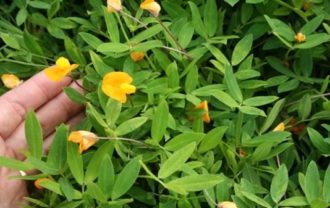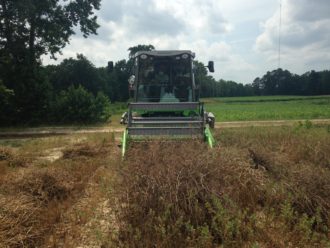RALEIGH, North Carolina – North Carolina State University researchers are working to expand the portfolio of crops farmers can use in grain, forage and cover crop production.
Through a Southern Sustainable Agriculture Research & Education (SSARE) Graduate Student grant, student Rachel Atwell Vann and organic cropping specialist Chris Reberg-Horton field tested 19 winter pea (Pisum sativum) genotypes for grain production potential, as well as their use as a forage and cover crop.
“Winter pea is desirable for grain production in the Southeast to increase feed protein availability for livestock production in the region,” said Vann, “but there have not been many studies devoted to maximizing pea genetics for grain production in this area.” Vann said winter pea can also be grown as a forage and cover crop, but few studies exist on winter pea potential in the Southeast. Much of the legume cover crop research has focused on crimson clover and hairy vetch.
NCSU Extension has created two articles outlining details of the study:
Winter Pea for Grain Production in North Carolina: Research Summary
New Research on Winter Peas for Forage, Grain, and as a Cover Crop in NC
In the study (GS14-135), “Identifying Regionally Adapted Winter Pea and Faba Bean Genotypes That Maximize Grain and Cover Cropping Potential,” the researchers grew the pea genotypes either in monoculture or in a mix with wheat, and looked at cold tolerance, biomass production, disease incidence, maturity, lodging and grain yield.
They found that winter pea can be grown in a mixture with wheat and harvested simultaneously with minimal difficulty, however pea yields were very low across all genotypes.
“Peas are very sensitive to heat during flowering, and when these peas were flowering in mid to late April, it was already very hot in North Carolina,” said Vann. “Future work will focus on working with earlier flowering genotypes.”
In addition, as a cover crop, winter pea has the potential to produce comparable biomass to crimson clover or hairy vetch and has the additional benefits of easy termination and no hard seed.
“Eighteen of the 19 pea genotypes survived North Carolina’s winters. Disease pressure, particularly from the Sclerotinia complex, remains a large challenge for pea production in the Southeast region,” she said.
The researchers also studied five faba bean genotypes for use as a legume cover crop. Preliminary results are promising, with additional research to be conducted.
Published by the Southern Region of the Sustainable Agriculture Research and Education (SARE) program. Funded by the USDA National Institute of Food and Agriculture (NIFA), Southern SARE operates under cooperative agreements with the University of Georgia, Fort Valley State University, and the Kerr Center for Sustainable Agriculture to offer competitive grants to advance sustainable agriculture in America's Southern region. This material is based upon work that is supported by the National Institute of Food and Agriculture, U.S. Department of Agriculture, through Southern Sustainable Agriculture Research and Education, under sub-award numbers: GS14-135. USDA is an equal opportunity employer and service provider. Any opinions, findings, conclusions, or recommendations expressed in this publication are those of the author(s) and do not necessarily reflect the view of the U.S. Department of Agriculture.

